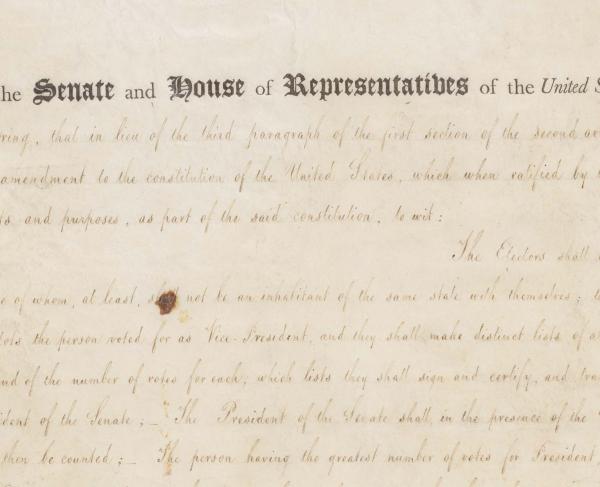Fort Meigs

From February to April 1813, American soldiers and militiamen under direction of General William Henry Harrison constructed Fort Meigs on a bluff overlooking the Maumee River near present day Perrysburg, Ohio. The site was chosen to control the river, to serve as a supply depot for the American Army, and as a launching point for American attacks on Canada. It was an impressive feat of engineering. The walls were fifteen feet thick, partially sunken, and the strong earthen work sloping away from the walls, exuded the appearance of impregnability. When completed, it was the largest wooden fortification erected on the continent. Despite horrendously cold weather, the Americans, sometimes working in deep mud, completed the strong fortifications just before the British, under General Henry Procter, began the first of two sieges to break the American hold in the old northwest territory. It was so cold that one American sentry froze to death at his post in a two-hour stint. Two days before the pending attack, Harrison inspired his men to duty, “To your posts then fellow soldiers and remember that the eyes of your country are upon you!” Starting on May 1, 1813 the British pounded the American fortification with artillery. For the 1,100-man American command inside the fort, American spirits were bolstered when 1,200 Kentucky militiamen arrived at the fort via the Maumee River having fought two land battles to make their way into the American position.
May 5th saw the single largest fight of the siege. As the Kentuckians arrived they attacked the British forces encamped on the west bank of the Maumee. Simultaneously, Harrison led an American sortie out of the defenses and attacked the British on the east bank of the river. After some initial success the Kentuckians pressed their attack too far and the men became highly disorganized. Taking advantage of an opportunity the British, Canadian militia, and their Indian allies, led by the warrior chief, Tecumseh, counterattacked. More than 600 Kentuckians were either killed, wounded or captured, and Harrison vented his spleen saying, “the excessive ardour” demonstrated by the men from Kentucky was “scarcely less fatal than cowardice.” In what became known as Dudley’s Massacre, the Indians began killing their captives much to the horror of the British. When it was finished forty Americans lay dead. Only after pleas made by Tecumseh did the carnage stop. At the end of the day the Americans still controlled the fort and the British called off their attack as their Indian Allies, frustrated at the results, melted back into the wilderness. For the next two months, during a reprieve, the Americans rebuilt what was left of their fortified camp.
In a July 4 celebratory toast raised to honor Harrison one defender wrote, “When the impartial historian records his preservation of Fort Meigs the reader will find a monument which no time can decay.”
Later that month, the British, Canadians, and Indians once more attacked the American stronghold. This time Tecumseh convinced the British and Canadians to contrive a ruse in an effort to draw the Americans outside of their palisade. Pretending to be engaged in combat in the wilderness beyond the view shed of the Americans a faux battle was held. Solid intelligence on the part of the Americans knew that there were no other American troops in the vicinity and the Americans, now under the command of General Green Clay, did not fall for it, remaining inside the walls. Once again, the British lifted their attack and under the advice of Tecumseh decided to attack the American position at Fort Stephenson on the Sandusky River.
After the British failed to take Fort Stephenson, Harrison disbanded the garrison at Fort Meigs as the British attempt to seize Ohio fizzled out.


